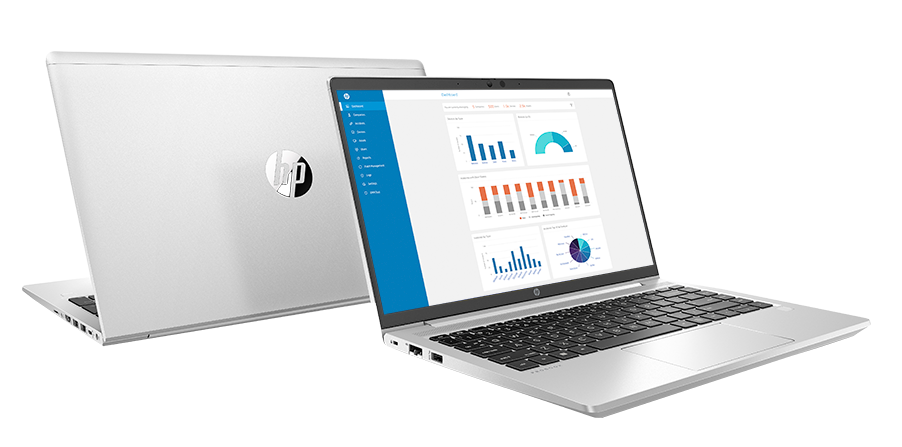
The rise of artificial intelligence (AI) has ushered in unprecedented advancements and opportunities. However, with these advancements come new challenges, particularly in IT device security.
From unauthorised access to sensitive data to remote manipulation of critical infrastructure, the risks associated with compromised IT devices are significant and can have far-reaching consequences.
To ensure robust IT device security management, organisations must adopt a proactive and comprehensive approach encompassing prevention and response strategies.
Continue reading to learn about IT device security to protect your business in our increasingly AI-centric world.
But First, Why is IT Device Security Important?
The interconnectivity of our IT devices is expanding, with technologies like the Internet of Things (IoT) enabling millions of devices to communicate and utilise AI for automation and data analysis.
However, this increased interconnectedness also introduces a higher number of potential vulnerabilities, making networks more prone to security breaches.
This is because every device within these networks, whether it’s a communication device or a cloud server, represents a potential entry point for malicious activities.
Furthermore, the AI era brings forth a unique security challenge: AI-powered cyber threats.
For instance, attackers can use AI to scan systems for weaknesses and identify potential entry points, enabling them to launch targeted attacks with a higher likelihood of success.
It can also be employed in sophisticated social engineering attacks, where attackers manipulate individuals into revealing their passwords or personal information.
As a result, businesses need to go beyond traditional cybersecurity measures and adopt IT device security strategies to counter these evolving threats.
Read More: Business IT Services: Device As A Service Vs Desktop As A Service
4 IT Device Security Risks for Businesses

Here are several key IT device security threats that businesses need to be aware of in this age of AI:
1. Data Privacy
AI systems heavily depend on large amounts of data for their training and operation. However, the data utilised often contains sensitive information, encompassing personal details, financial data, etc
As a result, businesses must have secure data collection, storage, and transmission practices for their IT devices to:
- Safeguard sensitive information.
- Maintain user trust.
- Ensure compliance with privacy regulations.
2. Malicious Use of AI
As mentioned earlier, AI can be weaponised to launch more sophisticated and damaging cyber-attacks.
It can analyse patterns, adapt to new information, and find weaknesses in systems more efficiently than human hackers, thus making AI-powered attacks more difficult to prevent and mitigate.
However, businesses can significantly strengthen their defence against these threats by prioritising IT device security. This includes:
- Implementing strong authentication mechanisms.
- Regularly updating software and firmware.
- Employing encryption techniques.
- Adopting multi-layered security measures.
3. Adversarial Attacks
Adversarial attacks are a serious threat to AI systems. They aim to deceive or confuse machine learning models, leading to harmful consequences.
For instance, imagine a situation where an AI is used to detect malware.
An adversarial attack could modify a piece of malware so that the AI no longer recognises it as a threat but still functions as intended.
This allows the malware to slip past the AI’s defences and infect the system.
To combat these attacks, developing robust AI models that can withstand such tricks is crucial. Additionally, ongoing research in AI security is also essential to stay ahead of potential threats.
4. Insider Threats
Lastly, insider threats are also a major risk to IT device security.
These threats arise when authorised individuals exploit a company’s vulnerabilities to compromise their AI models or steal valuable intellectual property for personal gain.
To mitigate insider threats to IT device security involving AI, businesses should implement the following measures:
- Regularly monitor and audit user activities to detect unauthorised access or suspicious behaviour.
- Implement data loss prevention mechanisms to detect and prevent unauthorised data exfiltration.
- Establish strict policies and procedures for handling sensitive data and intellectual property.
- Conduct thorough background checks and screening processes for employees with access to the company’s AI devices.
Read More: Reduce Total Cost of Ownership With IT Device Rentals
Enhanced Efficiency & Security: DaaS 360’s Remote IT Infrastructure Management
DaaS 360 provides a flexible and customisable monitoring and management service that remotely manages a business’s IT infrastructure and systems.
Not only can clients benefit from improved efficiencies and scalability, but they can also enjoy better security.
For instance, our remote managed service ensures that devices are activated at scheduled times to receive essential updates, thus minimising non-compliant systems from connecting to corporate networks.
Moreover, IT administrators can remotely wipe data or recover compromised devices in case of device theft or infection.
To learn more about how our remote IT infrastructure management can enhance your business’s efficiency and security, get in touch with our experts today!
You can also visit our main blog to stay ahead of emerging threats and gain valuable insights into IT device security and more.









